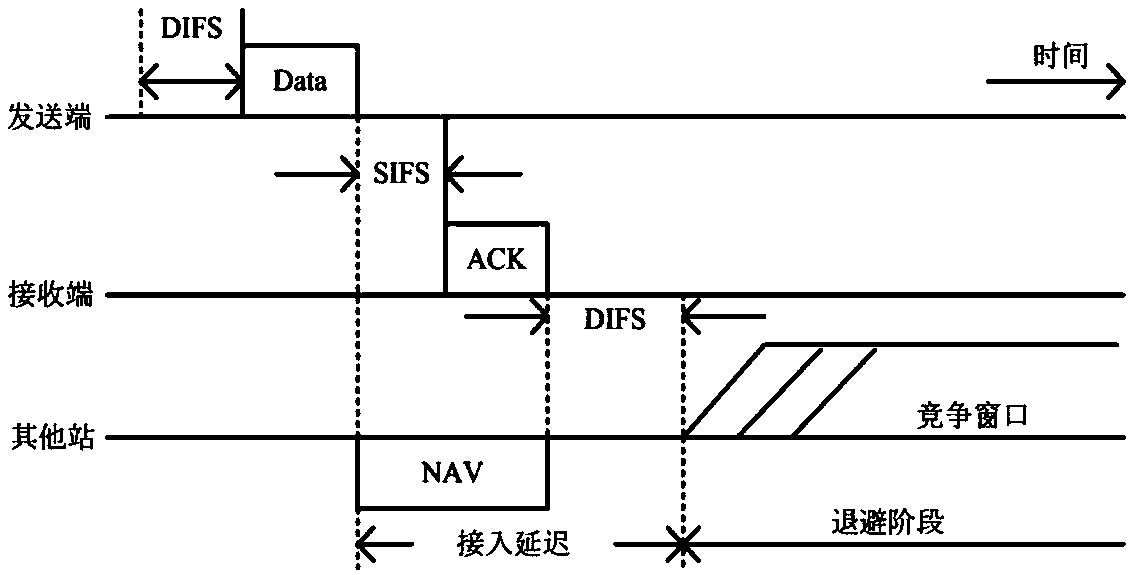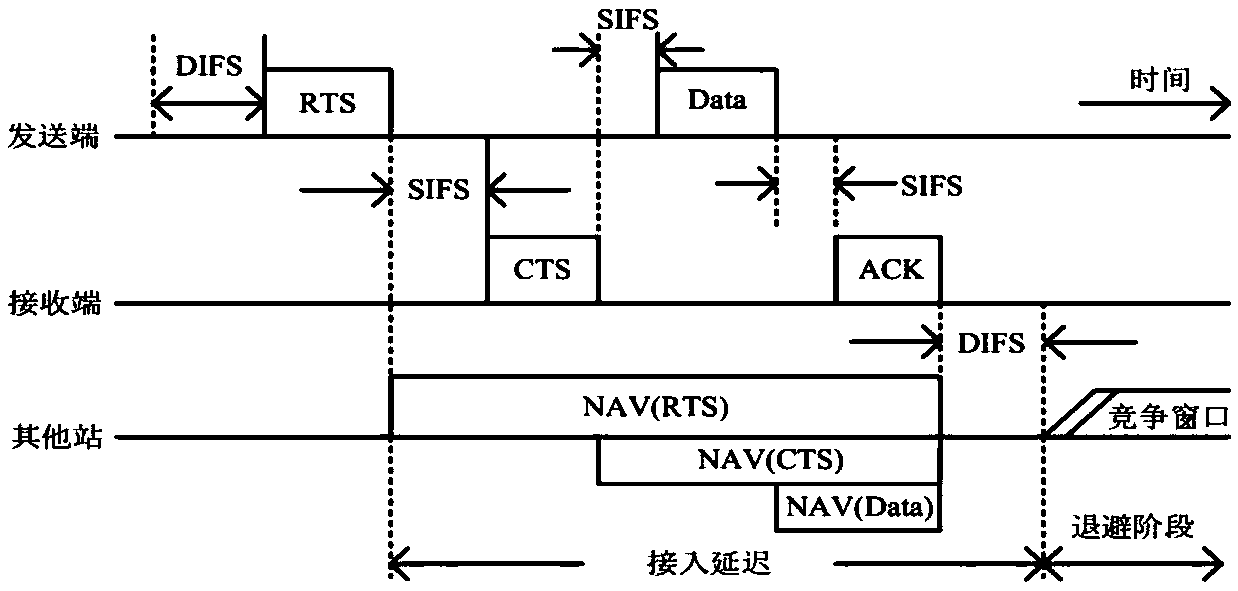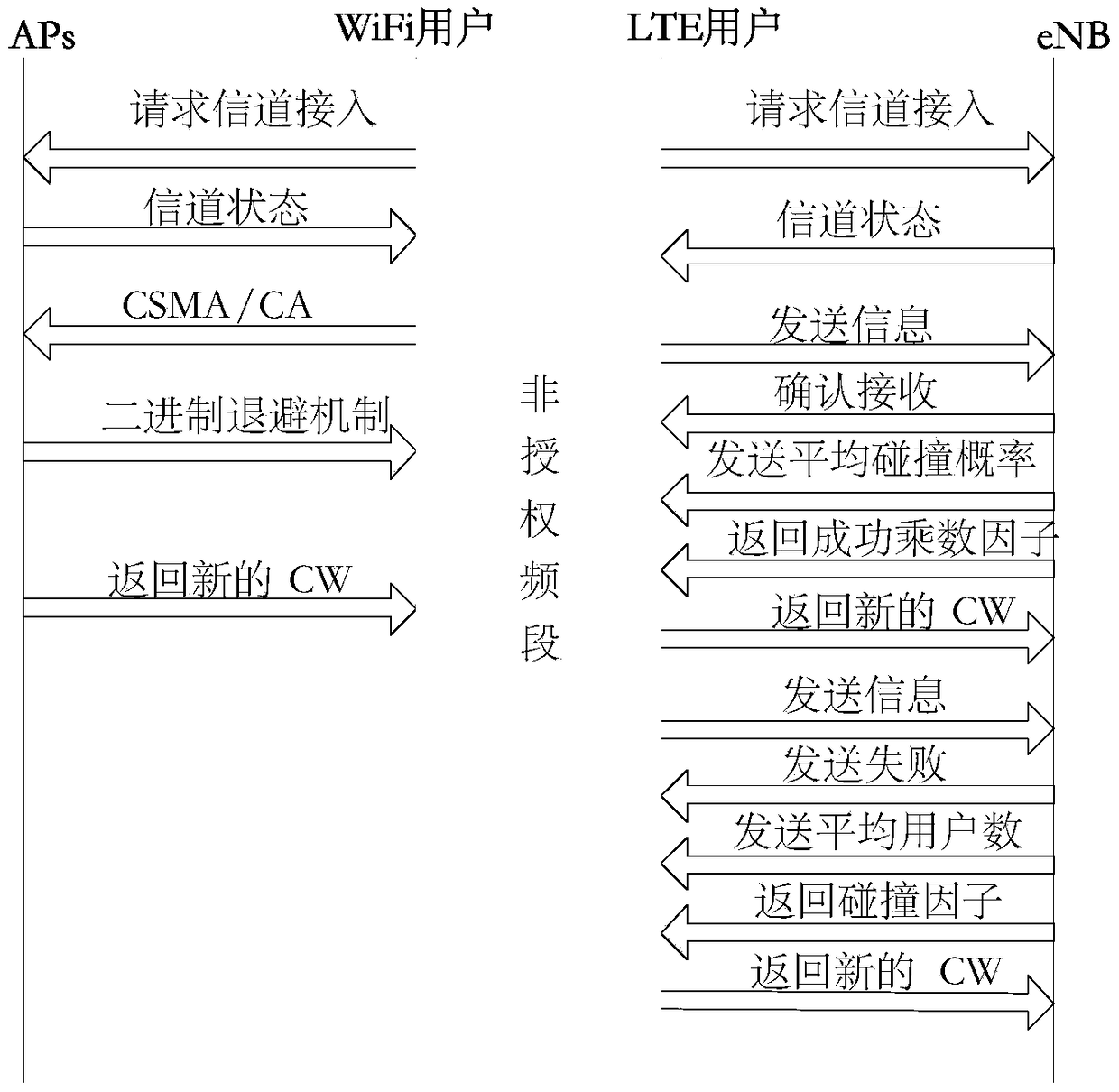Method for transmitting data under coexistence of LTE system and WiFi system on unlicensed frequency band
An unlicensed frequency band and data transmission technology, applied in electrical components, wireless communication, etc., can solve problems such as no longer applicable and inability to achieve optimal network performance, and achieve the effects of ensuring transmission, improving coexistence performance, and friendly coexistence
- Summary
- Abstract
- Description
- Claims
- Application Information
AI Technical Summary
Problems solved by technology
Method used
Image
Examples
Embodiment 1
[0049] Based on the consideration of QoS, the original MAC layer protocol is newly defined in IEEE 802.11e, and two new access mechanisms of the MAC layer are proposed, Enhanced Distributed Channel Access (EDCA) and Hybrid coordination function controlled channel access (Hybrid Coordination Function Controlled Channel Access, HCCA). EDCA mainly improves DCF, enhances the consideration of QoS, and correspondingly increases the concepts related to QoS, so as to better meet the needs of users. EDCA is evolved on the basis of the DCF mechanism in the IEEE802.11e protocol. It supports and extends the original DCF mechanism for QoS, and introduces the QoS enhancement technology of the MAC layer, so that the wireless LAN can better serve voice and voice. Higher priority services such as video provide differentiated services.
[0050] In the EDCA mechanism, in order to meet the business needs of different priorities, access categories (Access Category, AC) serving different types of ...
Embodiment 2
[0089] image 3 A schematic diagram of the implementation principle of an EDCA-based ALBT mechanism provided by the embodiment of the present invention, Figure 4 The processing flowchart of a kind of EDCA-based ALBT mechanism provided for the embodiment of the present invention includes the following processing steps:
[0090] Step 1: LTE-U users want to send data, and judge the data sending situation at the current stage. If the data is sent successfully, go to step 2; if the data collides, go to step 3;
[0091] Step 2: First calculate the average collision probability of the LTE system, then determine the success multiplier factor in combination with the priority parameters of the business, and finally determine the contention window value of the LTE system during the back-off process after the data transmission is successful;
[0092] Step 3: First estimate the number of active users in the network, then determine the collision multiplier factor in combination with the ...
PUM
 Login to View More
Login to View More Abstract
Description
Claims
Application Information
 Login to View More
Login to View More - R&D
- Intellectual Property
- Life Sciences
- Materials
- Tech Scout
- Unparalleled Data Quality
- Higher Quality Content
- 60% Fewer Hallucinations
Browse by: Latest US Patents, China's latest patents, Technical Efficacy Thesaurus, Application Domain, Technology Topic, Popular Technical Reports.
© 2025 PatSnap. All rights reserved.Legal|Privacy policy|Modern Slavery Act Transparency Statement|Sitemap|About US| Contact US: help@patsnap.com



